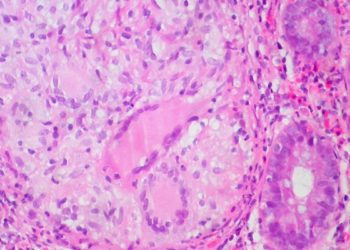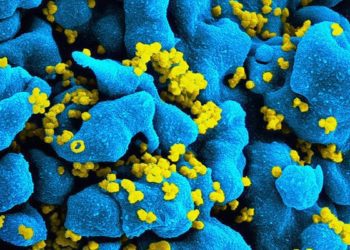Evidence suggests H7N9 avian influenza transmitted through animal contact
Image: PD
1. 139 individuals were infected with H7N9 (avian influenza) with 82% having had an exposure to live animals.
2. Approximately 2,700 close contacts of the patients were evaluated for the virus with only 1% developing respiratory symptoms and none testing positive for H7N9. However, four families may have had human-to-human transmission.
Evidence Rating Level: 1 (Excellent)
Study Rundown: This study provides epidemiologic data and the demographics of those infected by the avian influenza, H7N9 strain in early 2013. The authors found that the vast majority of patients had significant exposure to poultry. Human-to-human communication of the virus appears to be extremely limited, with only 4 families having had 2 or more cases where the second family member had limited exposure to livestock. Aside from these individuals, 99% of close contacts did not become infected, suggesting that transmission is dependent on contact with livestock. Strengths of the study include methods of confirmation of infection and close monitoring of close contacts. Limitations include loss of monitoring of patients who were discharged from the hospital, which could affect the mortality estimate. It would be interesting to confirm whether the virus could be found within poultry tissue specifically to help confirm the source of the virus.
Click to read the study in NEJM
Relevant Reading: The first case of H7N9 influenza in Taiwan
In-Depth [epidemiologic study]: In this study, over 130 cases of H7N9 avian influenza were confirmed in China between mid-March and December 2013. Patients were confirmed to have the infection with the presence of H7N9 virus by RT-PCR or serologic testing. Once confirmed, these patients were asked for further demographic details. Close contacts were then monitored to assess risk of close transmission after determining exposure history during the weeks prior to onset of symptoms in their contacts. Contacts were monitored for 1 week to identify any respiratory symptoms. Median age of patients infected with the virus was 61 years with a male predominance (71%). Most patients (82%) had exposure to livestock, specifically chickens. 90% of patients had respiratory failure with over a 30% mortality rate. Illness lasted for approximately 3 weeks. Approximately 2,700 close contacts of cases were identified and monitored with only 1% displaying respiratory symptoms. In four additional families human transmission of the virus could not be ruled out. Otherwise, none of the symptomatic contacts were positive for the virus.
By Swarup Swaminathan and Andrew Bishara
More from this author: Argus II retinal prosthesis significantly improves spatial vision in blind patients, Artificial cornea is well retained in patients with ocular surface disease, High prevalence of undiagnosed glaucoma in West Africa, Interferon therapy is superior to methotrexate for uveitis, Rho kinase inhibitor safely reduces intraocular pressure
©2012-2013 2minutemedicine.com. All rights reserved. No works may be reproduced without expressed written consent from 2minutemedicine.com. Disclaimer: We present factual information directly from peer reviewed medical journals. No post should be construed as medical advice and is not intended as such by the authors, editors, staff or by 2minutemedicine.com. PLEASE SEE A HEALTHCARE PROVIDER IN YOUR AREA IF YOU SEEK MEDICAL ADVICE OF ANY SORT.






